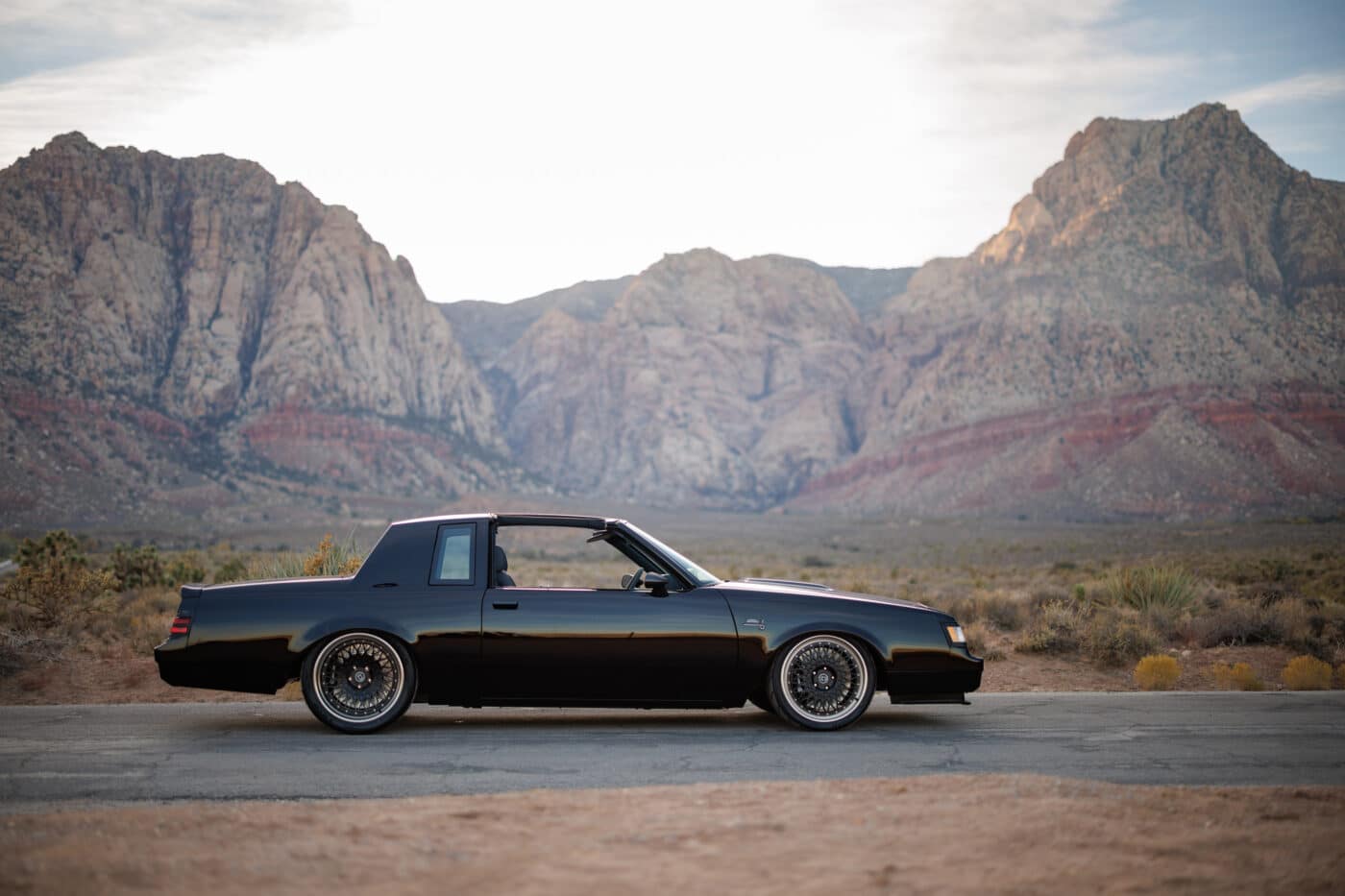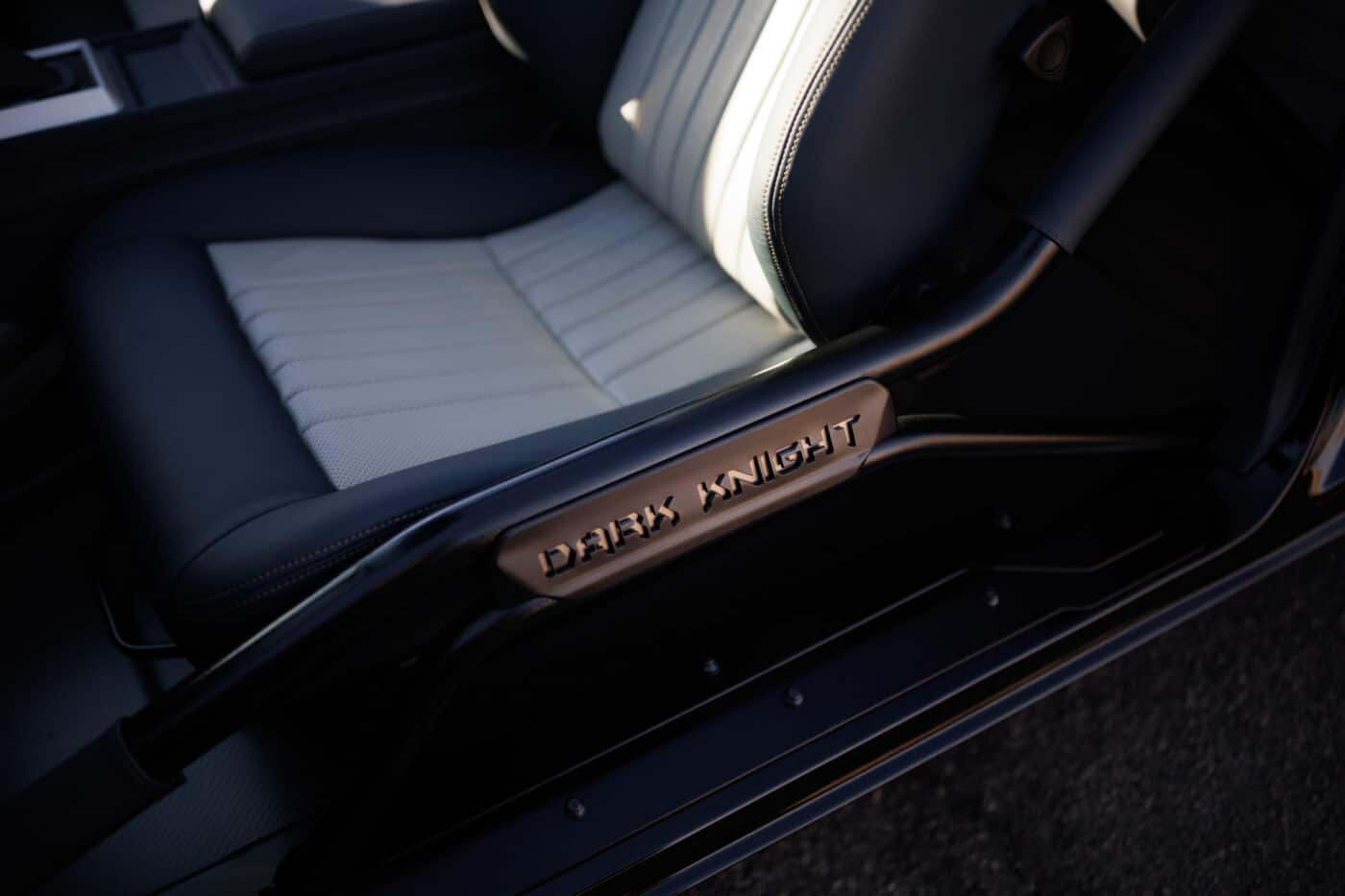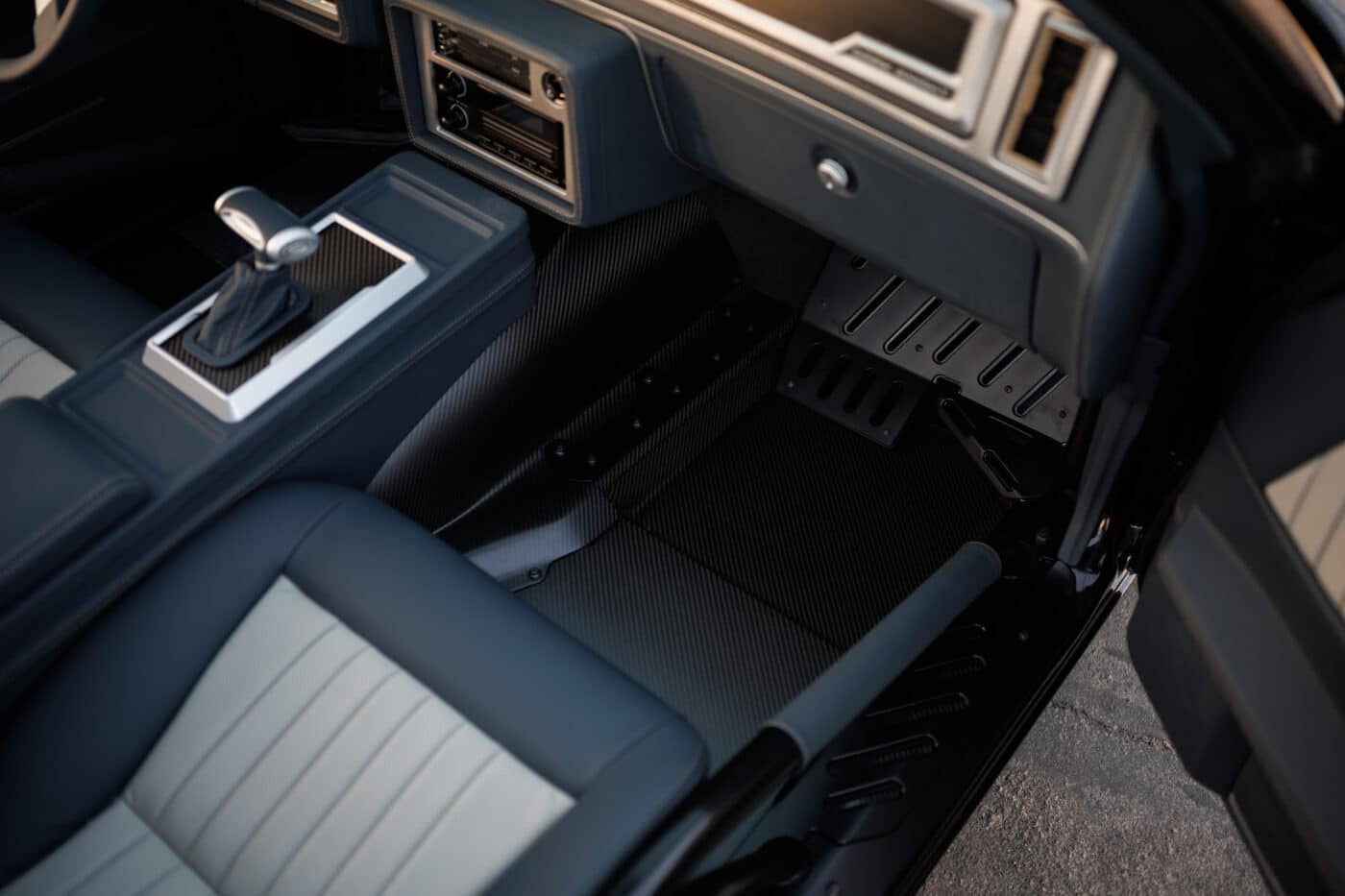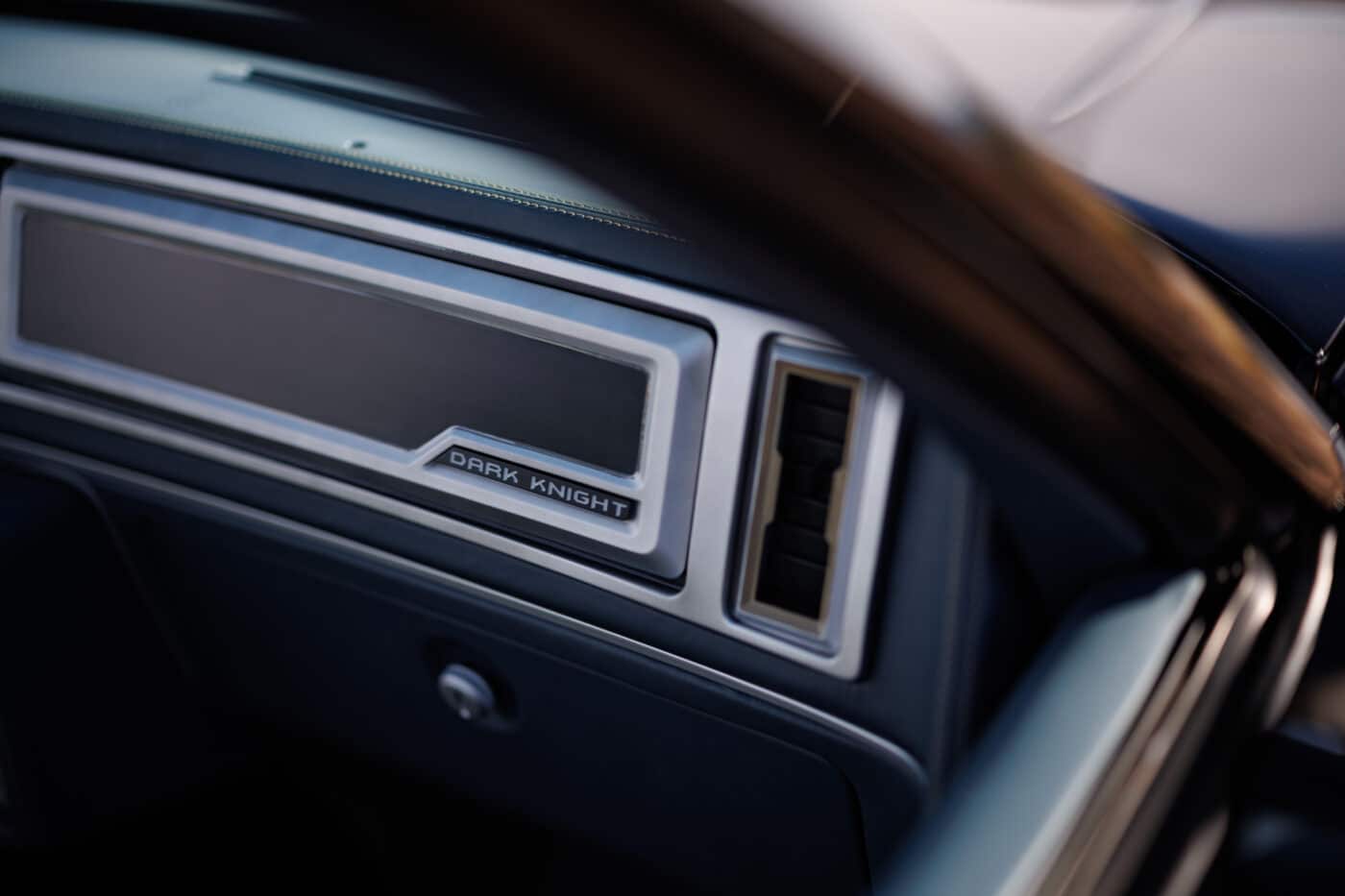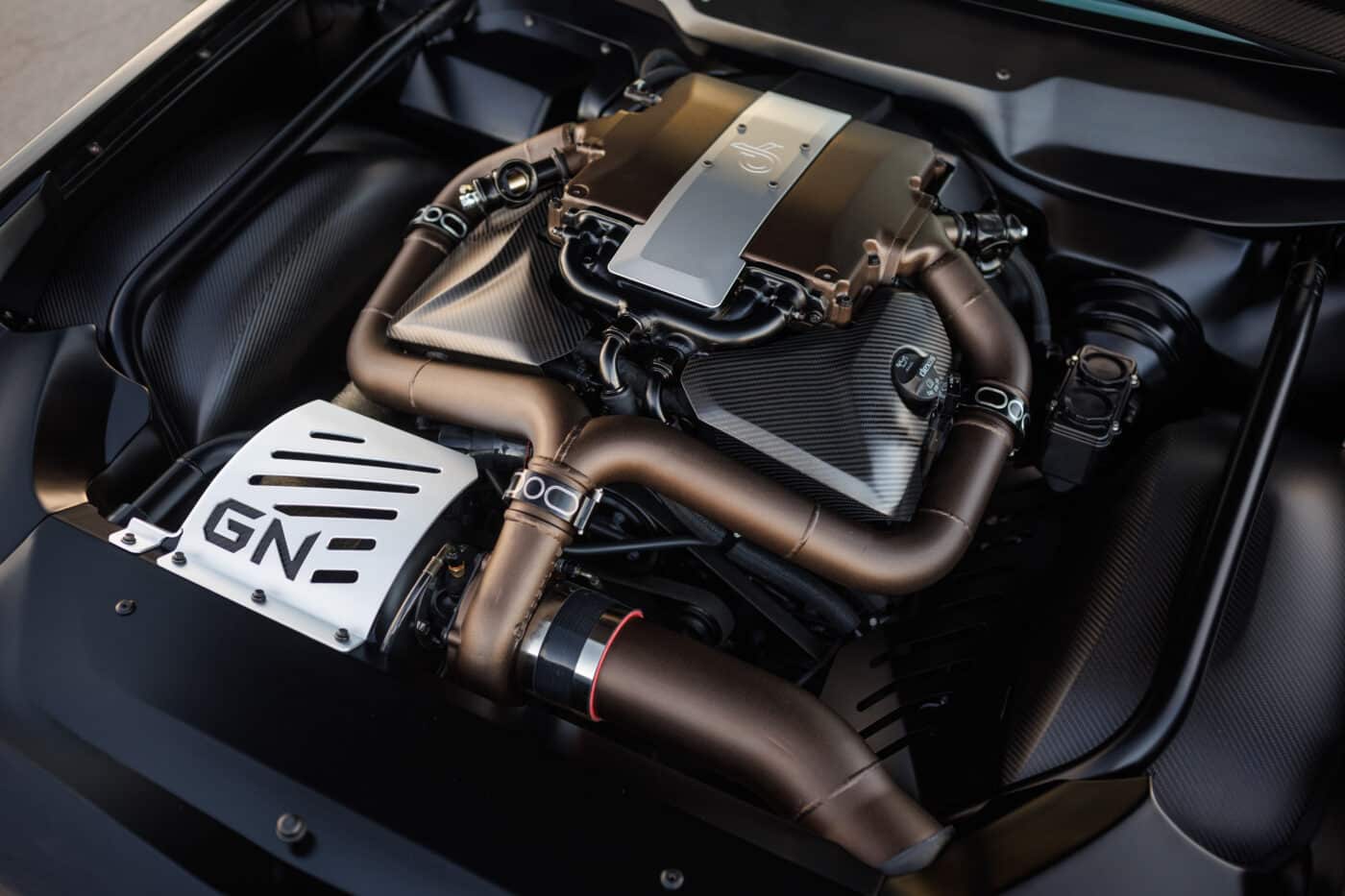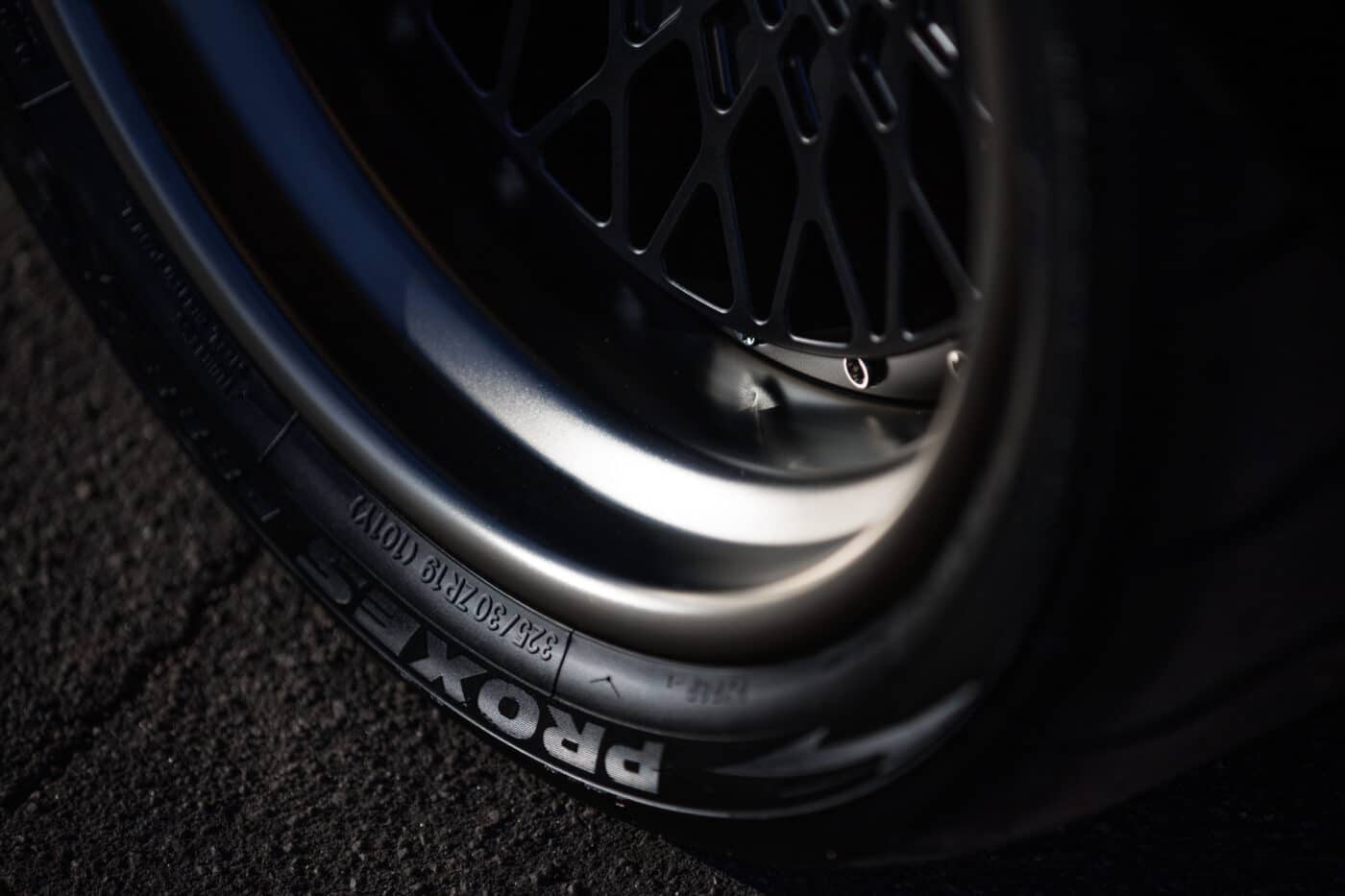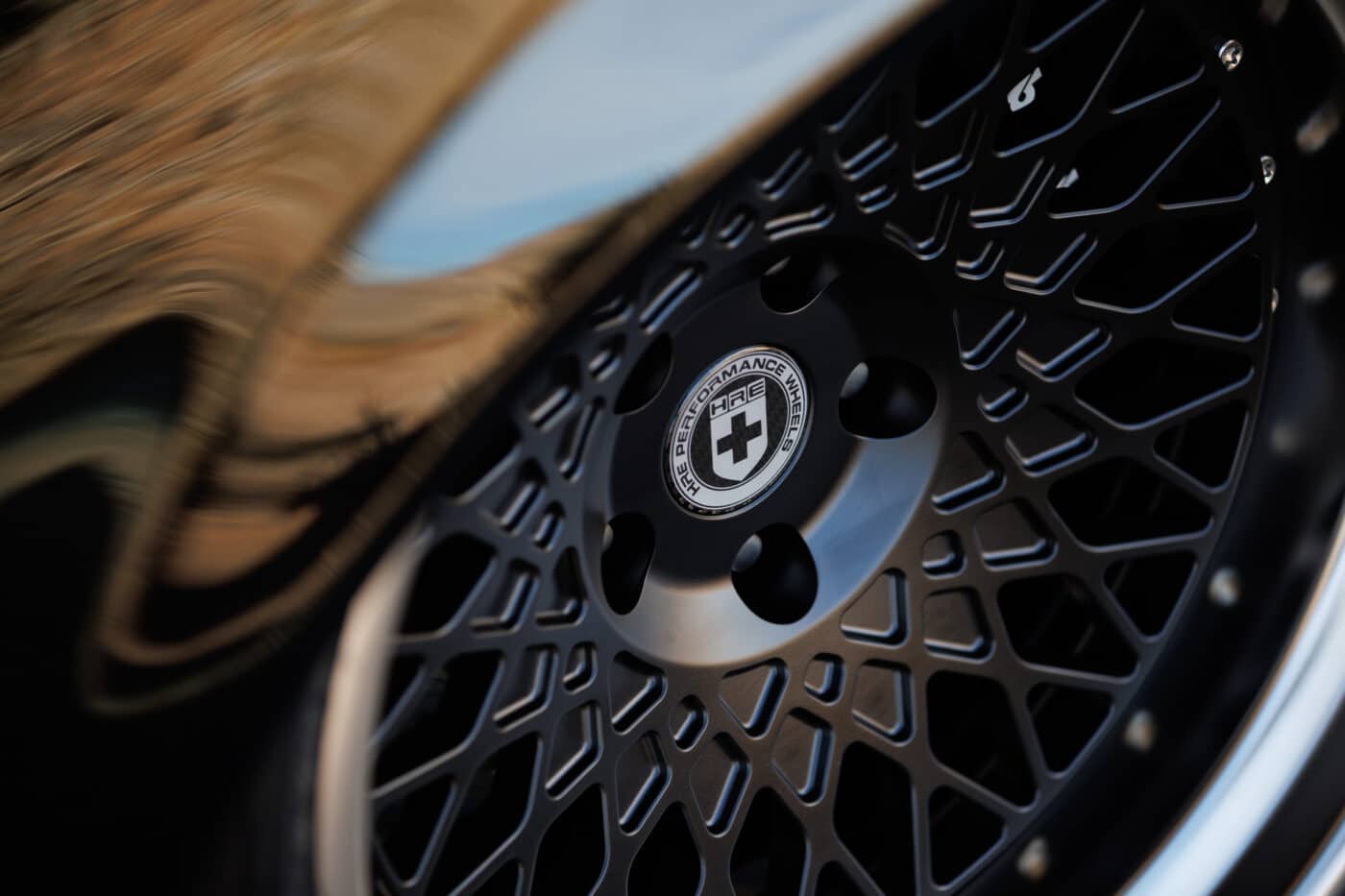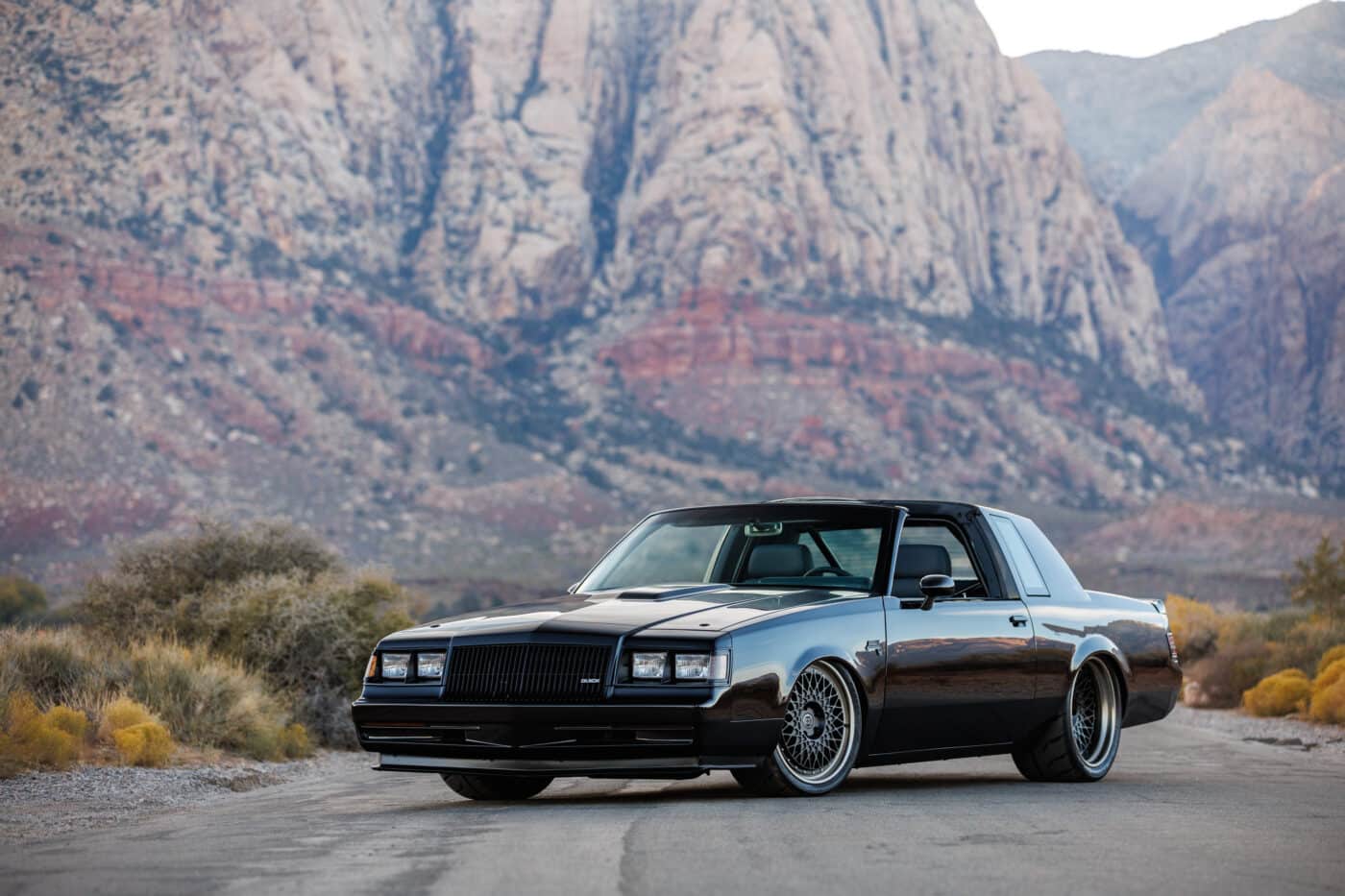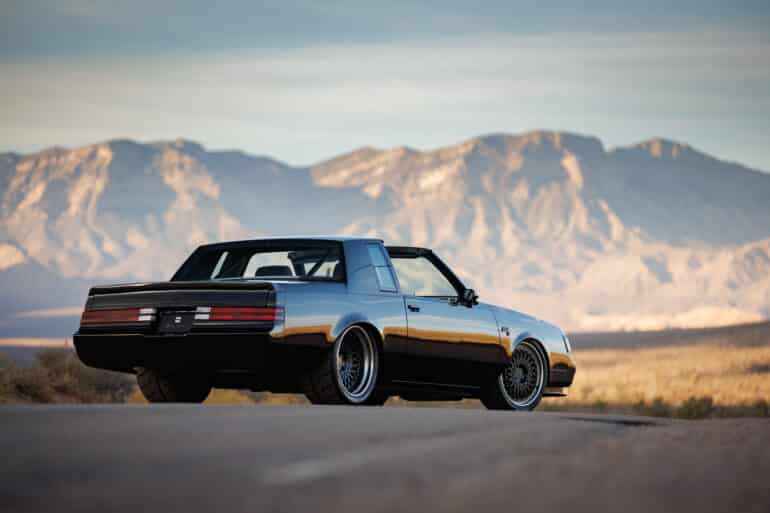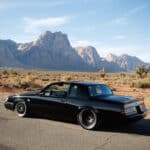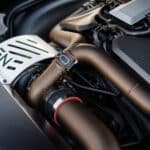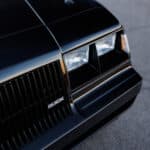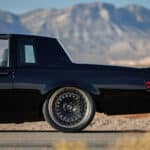Kevin Hart stopped by the 2022 SEMA show in Las Vegas to catch a glimpse of his latest project build, a 1987 Buick Grand National T-Top. Hart’s Grand National, nicknamed “Dark Knight,” was on display at the Magnaflow booth, just across from his 1969 Plymouth Roadrunner in the Meguiar’s booth. Both cars were built by Salvaggio Design with designer Sean Smith at the helm.
Subtle Sleeper Car
Hart’s vision for Dark Knight was that of a sleeper car. Indeed, Hart was looking for a modern-day restomod with the latest technology, but the design directive for Dark Knight was more about subtly. Hart already owns a Grand National GNX with its original flares and wanted to preserve the factory styling as much as possible for Dark Knight.
Some of Dark Knight’s most important styling cues are also functional. Smith and the Salvaggio Design team used CAD technology to scan and 3D print a new carbon fiber front bumper with air ducts to improve cooling and aerodynamics. Carbon fiber from Brothers Composites is also found on the hood, chin spoiler, rear spoiler, and mirrors.
Next was to “tighten” the body lines, which involved reprofiling the door shut lines to create a smooth look across the primary surface. Randy Russell, Telly Violetto, and Craig Ness completed Dark Knight’s metalwork fabrication. Meanwhile, Smith designed new door handles machined from billet with carbon fiber inlays.
With the bodywork complete, the car was painted in straight BASF black – no tints or effects. While the lighting and grille are stock, Smith modernized the Grand National badge.

Sibling Rivalry Ignited
Mario Abascal from Gearhead Fabrications was consulted for Dark Knight’s powertrain. Naturally, the Chevy LS V8 was a topic of heated debate, but Abascal suggested the LF4 3.6-liter V6 twin-turbo from the Cadillac ATS-V. “It was the obvious choice for what Buick might have installed if the Grand National GNX were around today,” he explained.
There is a historical precedent to what Abascal is saying, and the turbo plant from the now-defunct ATS-V matches the original Grand National’s on-road persona. In more ways than one, Hart’s Dark Knight hints back to a sibling rivalry within General Motors during the Grand National’s heyday. Old-school enthusiasts and long-retired Detroit auto workers can still recall this in the late 1980s.
During his career, veteran automotive journalist and editor Marty Schorr handled Buick’s East Coast public relations and was involved in the GNX program in 1987, one he credits with changing his mind about Buick as a whole. Schorr owned a 427 Corvette at the time, but the Grand National was a rising star within GM. And everyone knew it.
“It was quicker and faster than the stock Corvette, and Chevrolet didn’t like that, but there was no denying it,” Schorr recalled of the 1987 Buick GNX. The car’s 3.8-liter turbocharged V6 created 276 horsepower and spawned this wonderful bumper sticker. “We did tests at Popular Mechanics with one of our GNXs versus a Callaway, and we mopped up the track with the GNX,” Schorr continued. “We clobbered the Callaway into the next zip code, and that was a twin-turbo Corvette! We really started a whole little revolution within General Motors with the GNX.”
Of course, having made the suggestion, Abascal had his work cut out for him, given the direct injection engine and eight-speed automatic of the ATS-V.

Trash Day & Single Turbo Design
After sourcing a functional ATS-V drivetrain, Gearhead Fabrications unstrapped it from a pallet at their home base and began the process of sorting and cataloging. When it arrived, the ATS-V drivetrain included the V6 engine, transmission, wiring harness, control modules, dashboard, and steering system. It took 45 hours to isolate each individual wire and module to learn what could be scrapped without affecting functionality. The Gearhead Fabrications team filled up a number of trash bags, discarding around 60 percent of unnecessary bulk.
After taking out the garbage, the primary strategy was to ensure the engine and chassis would play nice with each other. Dark Knight rides on a laser-cut and TIG-welded custom Salvaggio frame with a Detroit Speed and Engineering X-Gen 595 front suspension package. The bolt-in subframe increases Dark Knight’s rigidity and better supports the Ultimate Performance coilovers. The rear employs a DSE four-link with a Panhard bar.
Like Hart, Abascal also understood the importance of paying homage to the original GNX – which meant fundamentally redesigning what was left of the ATS-V drivetrain. Abascal removed the Cadillac twin-turbo setup, building a single-turbo kit around a 67mm Boost Labs BL67R ball-bearing turbo with a billet wheel. It was mounted to a custom header once Salvaggio Design fabricated flanges to fit the Cadillac’s integral manifold. Abascal would later design the engine’s plumbing and a custom Magnaflow exhaust.

The Work Continues
Installing the reimagined drivetrain required new mounts and the repositioning of the oil coolers, oil filters, and turbo coolant system. The team also extended 300 different wiring connections (painstakingly) to relocate the PCM under the new carbon fiber engine covers. To accommodate the new drivetrain and tidy the engine bay, Salvaggio fabricated a core support and radiator cover before creating a new firewall and installing carbon fiber inner fender wells.
A lobe governs Dark Knight’s fuel supply on the factory cam – and by using a Comp Cams “fuel cam,” Abascal increased the flow to feed the turbo. He then controlled engine boost, fuel, ignition, and even transmission shift points via an HP Tuners module.
Running at about 20 psi boost pressure, the single-turbo Cadillac V6 was dyno-tested at 650 horsepower on 103 octane fuel. The intention is to fit performance camshafts and reach a projected 700 horsepower on race gas, a considerable increase over the original Grand National GNX (276 horsepower) and ATS-V (464 horsepower).
“We’re so happy that everything functions as it should and are delighted with the engine choice,” Abascal said. “The transmission shifts perfectly, and even the proximity sensor in the car can detect the key fob, only allowing the engine to start if the key is nearby.”

Interior Treatments
Dark Knight’s interior is equally impressive, with contributions from Salvaggio, Smith, and Gabe’s Custom Interiors. Like the Caped Crusader’s suit, the seats and door panels are a dark blue and grey leather combo. Bronze “utility belt” tones and accents are present throughout the cabin. The billet shift knob and shift boot bezel were machined from solid, while the instrument panel was 3D printed and fitted with Holley Performance gauges.
Dark Knight’s appearance at SEMA was made possible by many sponsors and supporters, including Plastic Cup Boys, Brembo, HRE Wheels, Toyo Tires, and Vintage Air, in addition to all the names and companies listed above.
Carl Anthony is Managing Editor of Automoblog and a member of the Midwest Automotive Media Association and the Society of Automotive Historians. He serves on the board of directors for the Ally Jolie Baldwin Foundation, is a past president of Detroit Working Writers, and a loyal Detroit Lions fan.
Photos & Source: Salvaggio Design.





